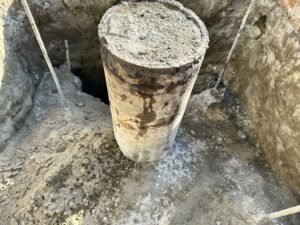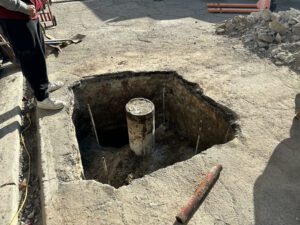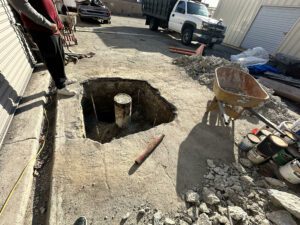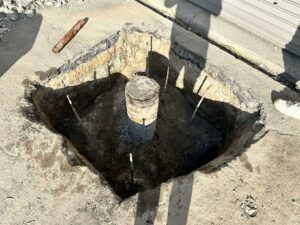
Los Angeles, a bustling metropolis, is known for its Hollywood glamor and sunny beaches. Yet, it harbors a lesser-known reality beneath its vibrant surface. Scattered throughout the city, thousands of oil wells, some abandoned and others still operational, are cleverly concealed from public view. This article explores the hidden world of LA oil rigs. We delve into their environmental impacts and the unexpected encounters during urban development.
The Historical Context of Oil Drilling in Los Angeles
The oil boom in Los Angeles began in the late 19th century. It transformed the city into one of the most prolific oil-producing regions in the United States. Over the decades, aggressive drilling led to the establishment of thousands of oil wells across the cityscape. Many of these LA oil rigs are now hidden in plain sight. Consequently, they are integrated into the urban environment so seamlessly that they often go unnoticed by the general public.
Discovery of Hidden and Abandoned Wells
During various construction projects and urban redevelopment efforts in Los Angeles, developers frequently stumbled upon abandoned oil wells. These had been forgotten over time. These hidden wells, lacking proper documentation and records, pose significant challenges. Thus, they complicate construction plans and raise concerns about soil stability and environmental safety.
Environmental Impact of LA Oil Rigs

The presence of oil rigs, both active and inactive, in Los Angeles has substantial environmental implications. These are similar to global concerns about methane emissions. Specifically, the oil wells contribute to local pollution and ecological disturbances.
Air Quality and Pollution
Oil extraction and processing release a variety of pollutants. These include notably volatile organic compounds (VOCs) and sulfur dioxide, contributing to the city’s air pollution. These emissions are particularly concerning because they can lead to the formation of ground-level ozone. This harmful air pollutant can impact human health and the environment. Furthermore, the dense placement of these LA oil rigs within urban areas amplifies exposure risks to residents. This mirrors the broader impacts of methane on public health.
Soil and Water Contamination
Abandoned and improperly decommissioned oil wells can lead to the contamination of soil and groundwater. Residual oil and other chemicals seep into the ground, posing long-term environmental hazards. This contamination affects not only the immediate areas surrounding the wells but also impacts the broader ecosystem. It influences water quality and soil health in surrounding communities.
Impact on Urban Wildlife and Green Spaces
The integration of oil wells within Los Angeles’ urban landscape has led to habitat disruption. Green spaces and wildlife areas are particularly vulnerable. The alteration of land for drilling activities and the resultant pollution can lead to habitat loss and biodiversity declines. This echoes the larger theme of habitat shifts due to climate change impacts discussed globally.
Economic and Social Implications of Oil Wells

The intersection of economic growth and oil production in Los Angeles has been a double-edged sword. While it has fueled economic development, it has also introduced challenges that affect the community and environment.
Economic Benefits and Challenges
While oil production has historically contributed to the economic prosperity of Los Angeles, it also presents financial challenges. Especially in terms of maintenance and environmental compliance. The city must balance the economic benefits derived from oil production with the costs associated with environmental mitigation and public health protection.
Social Impact and Community Response
The presence of oil wells can have diverse social impacts on local communities. Issues of environmental justice often arise. Lower-income neighborhoods may face greater exposure to oil well pollutants. As a result, communities are increasingly vigilant and proactive in seeking accountability and safeguards from the impacts of nearby oil operations.
Strategies for Managing Hidden Oil Wells
Addressing the challenges posed by hidden and abandoned oil wells in Los Angeles requires concerted efforts from multiple stakeholders. Here are some strategies that could mitigate these environmental impacts:
Improved Documentation and Monitoring
Enhancing the records and monitoring of existing and new oil wells is crucial. This would involve updating databases with accurate, comprehensive details about each well’s status. This can significantly aid in managing these sites more effectively and safely.
Remediation and Decommissioning
Focusing on the proper closure and remediation of abandoned oil wells is essential to prevent environmental contamination. This includes sealing old wells securely and rehabilitating the affected land to restore it as much as possible to its original condition.
Regulatory Reforms
Strengthening regulations around oil drilling and well maintenance within urban areas can help reduce environmental risks. These reforms should aim at reducing emissions, ensuring the safe operation of active wells, and setting stringent guidelines for the decommissioning of inactive ones.
The Role of Technology in LA Oil Rigs Management

Innovative technologies play a crucial role in modernizing oil well management, enhancing safety, and reducing environmental impacts. The deployment of cutting-edge tools and techniques is significant for addressing the unique challenges posed by urban oil drilling.
Advanced Monitoring and Safety Technologies
The implementation of advanced technologies for monitoring and managing oil wells can greatly enhance safety and environmental protection. Techniques like remote sensing and real-time data analysis can help detect leaks and other potential hazards early. This reduces the peril of accidents and environmental damage.
Automation in Oil Extraction
Automation technology is transforming the oil industry by improving the efficiency and safety of extraction processes. Automated systems can oversee operations, detect anomalies, and perform routine tasks without human intervention. This diminishes the potential for human error and intensifies operational safety.
Environmental Impact Reduction Technologies
Technological advancements also focus on minimizing the environmental impact of oil drilling. These technologies include enhanced oil recovery methods that reduce the need for new drilling and technologies that treat waste products more effectively. Ensuring that contaminants are less likely to enter the environment.
Closing Thoughts
The hidden oil wells of Los Angeles are a testament to the city’s rich but complex relationship with oil drilling. While they have contributed significantly to regional development, their environmental and health influences cannot be overlooked. As Los Angeles moves towards a more sustainable and environmentally friendly future, addressing the issues related to these hidden LA oil rigs will be crucial. By adopting comprehensive management strategies, the city can mitigate these impacts and ensure a healthier environment for all residents.
Through collective efforts, including public awareness, regulatory reforms, and technological advancements in oil well management, Los Angeles can confront and manage the challenges posed by its hidden LA oil rigs. Sway Features plays a vital role in this process, employing innovative methane systems and waterproofing membranes to secure construction sites and prevent contaminants from re-entering the environment.
In doing so, it will pave the way for a more sustainable urban environment, protecting both its inhabitants and the natural ecosystem upon which the city thrives.
